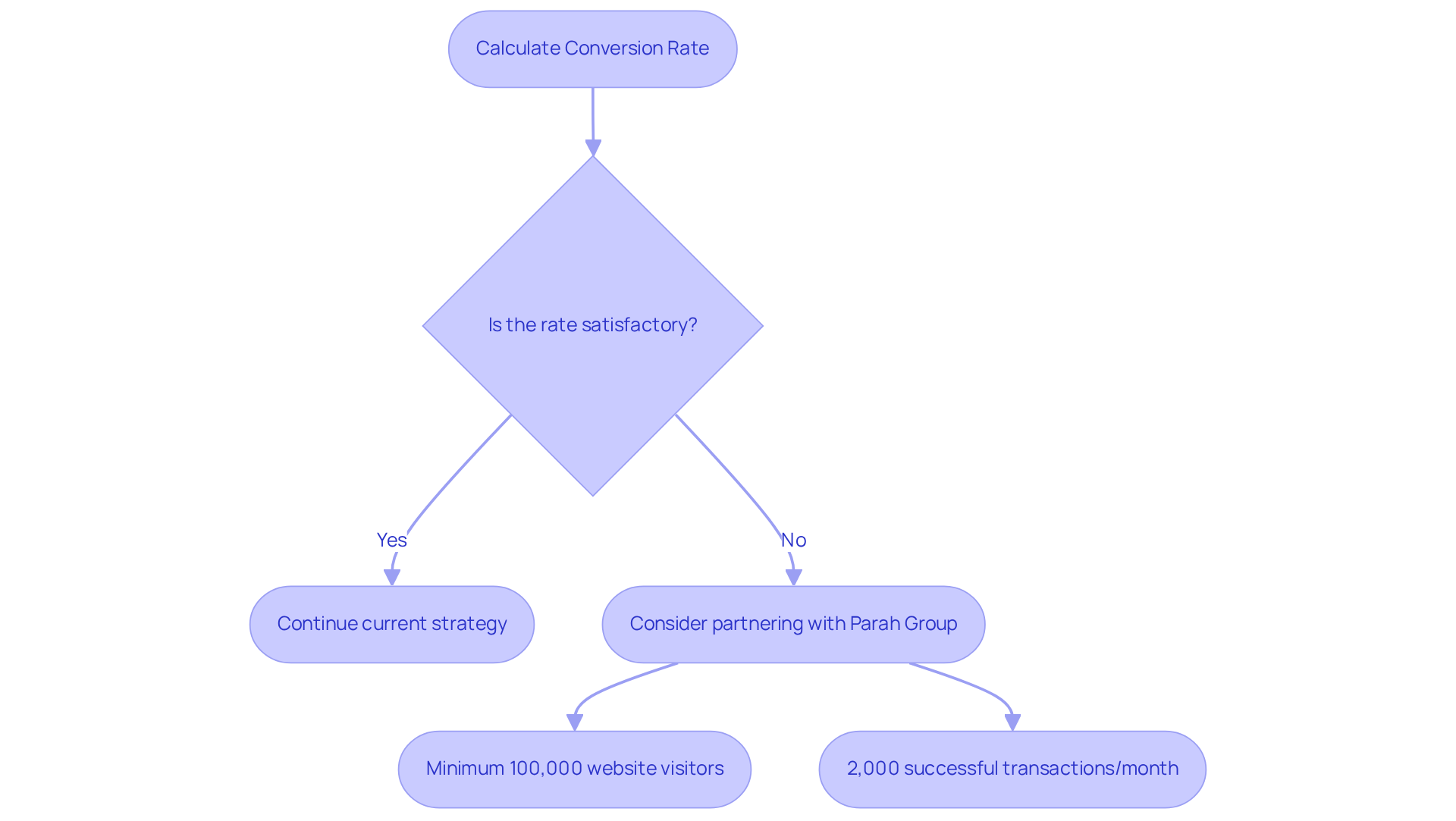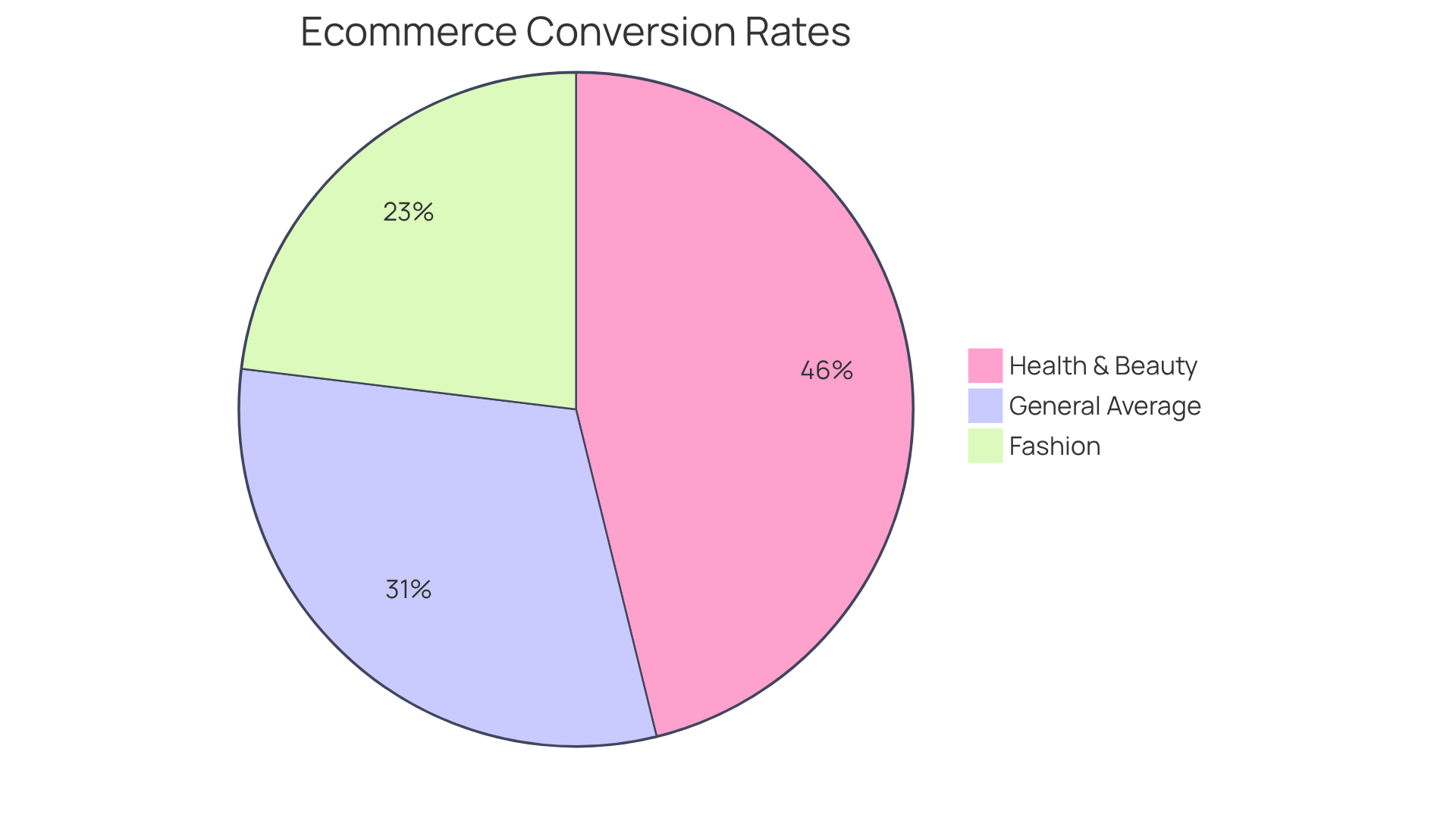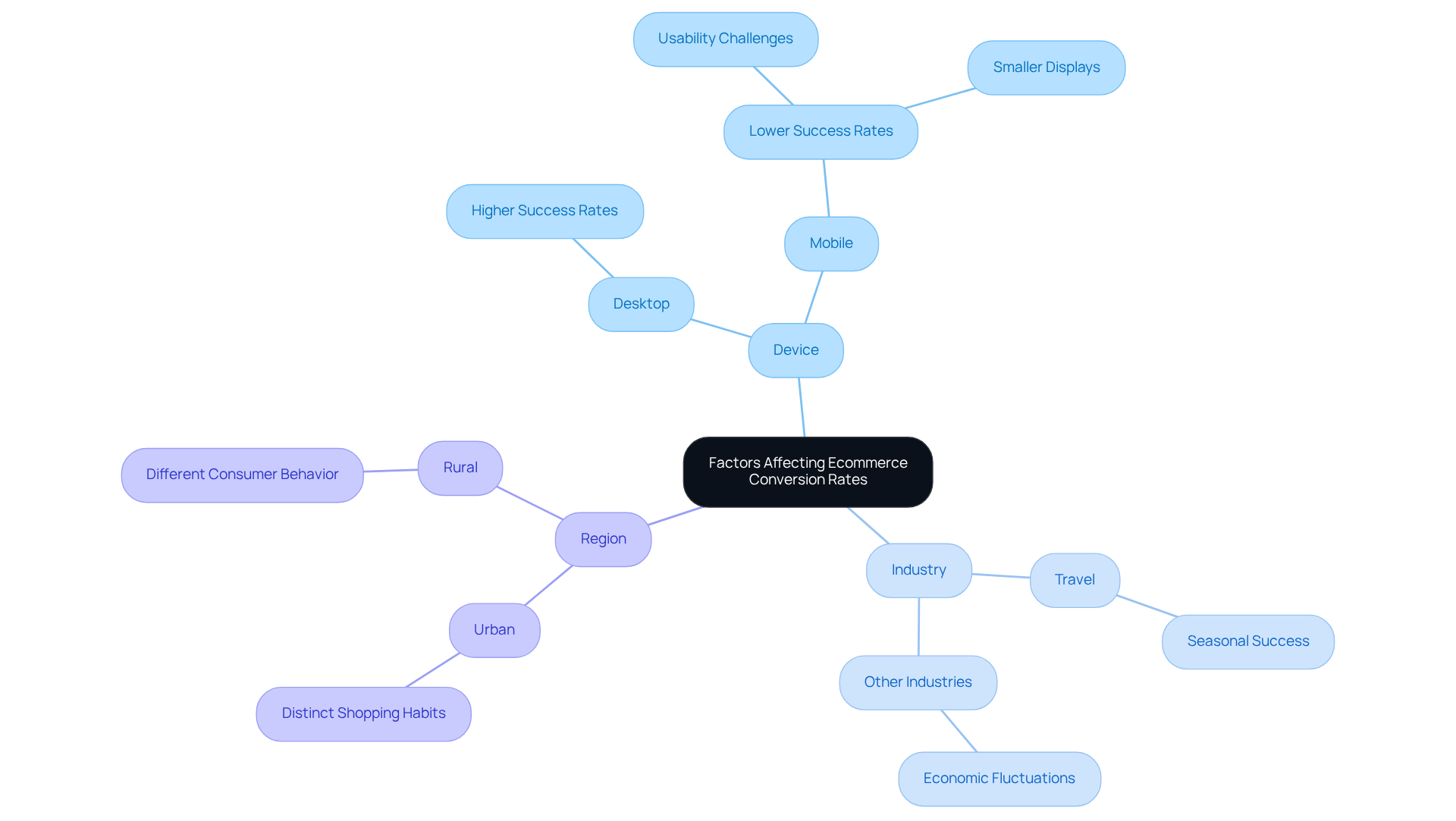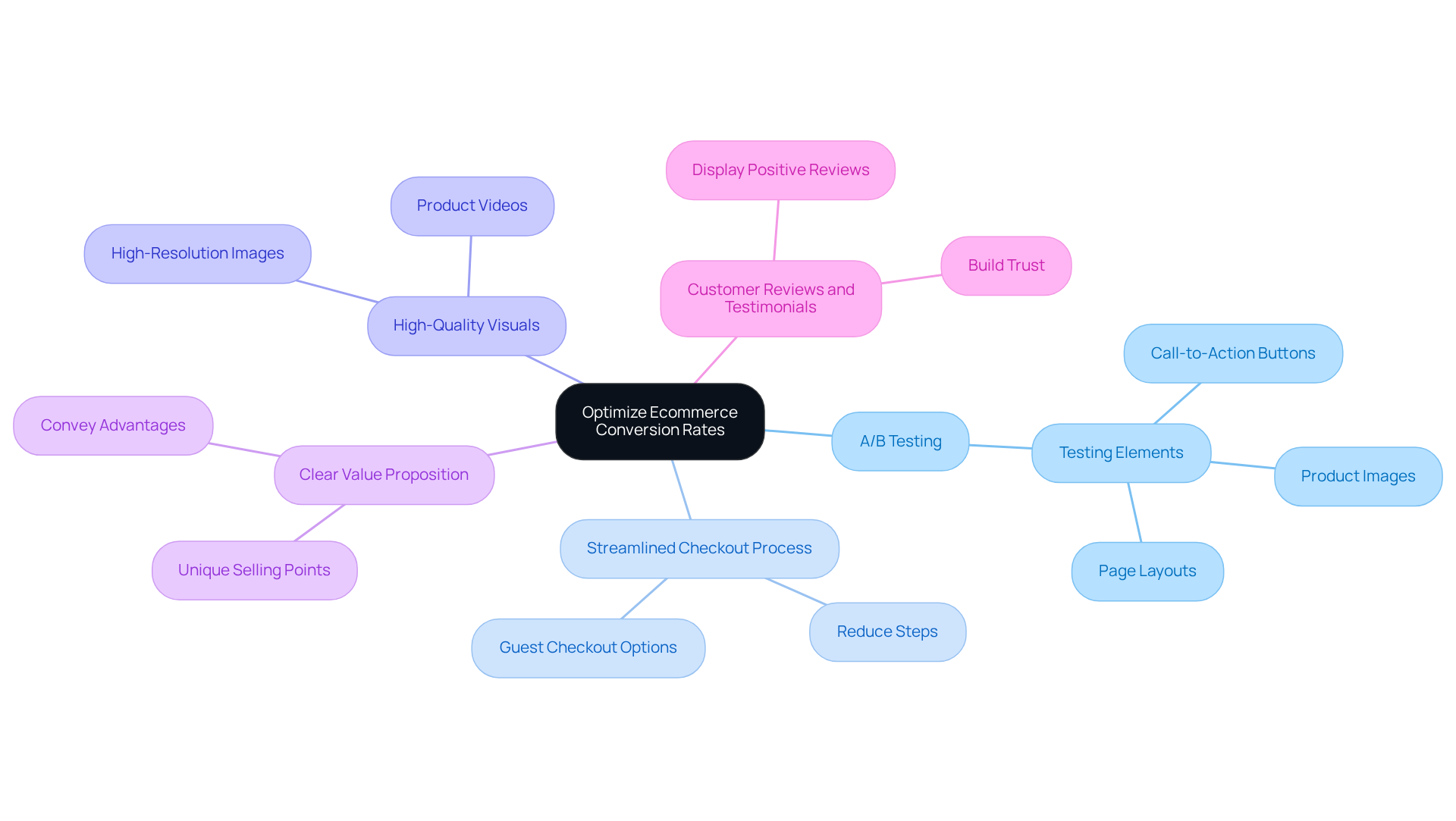
Overview
The typical conversion rate for ecommerce stands as a crucial metric, generally ranging from 1% to 3%, with variations influenced by industry specifics and market conditions. Understanding this rate is paramount; optimizing it through strategies such as A/B testing and streamlined checkout processes can significantly enhance sales and profitability. Thus, it becomes a vital focus for achieving ecommerce success.
Introduction
Understanding the dynamics of ecommerce conversion rates is essential for brands striving for success in a competitive digital marketplace. This critical metric not only reflects the effectiveness of online strategies but also directly impacts profitability, making it a focal point for optimization efforts.
As businesses navigate the complexities of consumer behavior and market trends, the question arises: how can companies effectively enhance their conversion rates to achieve sustainable growth and outperform industry benchmarks?
Define Ecommerce Conversion Rate and Its Importance
The typical conversion rate for ecommerce is a critical metric that reflects the proportion of visitors to an online shop who complete a desired action, typically making a purchase. This ratio is calculated by dividing the number of sales by the total number of visitors and multiplying by 100. For example, if 1,000 visitors arrive at your site and 50 make a purchase, your transaction percentage stands at 5%. This metric is indispensable as it directly influences a company's profitability; the typical conversion rate for ecommerce indicates that higher rates lead to increased sales without the need for additional traffic, solidifying its role as a vital performance indicator for ecommerce success.
Understanding this metric empowers brands to pinpoint areas for improvement and optimize their marketing strategies effectively. Conversion Rate Optimization (CRO) is the process of enhancing your website to elevate these results. Collaborating with a specialist organization like Parah Group can significantly boost your success rates. They emphasize sustainable growth and profitability through tailored strategies designed to reduce costs while increasing margins, ensuring that your ecommerce initiatives yield optimal results.
Brands looking to partner with Parah Group should meet specific criteria:
- A minimum of 100,000 website visitors
- 2,000 successful transactions per month
These requirements are necessary to ensure effective split testing and optimization. This partnership can pave the way for in the competitive ecommerce landscape.

Explore Average Ecommerce Conversion Rate Benchmarks
Ecommerce success rates vary significantly across sectors, with the typical conversion rate for ecommerce usually ranging from 1% to 3%. For instance, fashion and clothing websites often report lower success percentages, averaging around 1.5%. In contrast, specialized markets such as health and beauty can achieve success rates closer to 3%.
Understanding these benchmarks, including the typical conversion rate for ecommerce, is crucial for brands, as it allows them to set realistic goals and assess their performance metrics against industry standards. This assessment encourages a deeper analysis of their strategies.
Furthermore, leveraging tools like Google Analytics enables brands to monitor these metrics over time, offering valuable insights into and identifying areas that require attention.

Analyze Factors Affecting Conversion Rates by Device, Industry, and Region
Several elements significantly influence ecommerce success metrics, including the device utilized—desktop versus mobile—the specific sector, and geographic area. Notably, mobile users generally experience lower success levels compared to their desktop counterparts, primarily due to smaller displays and potential usability challenges.
Additionally, sectors such as travel may witness increased success during peak seasons, while others fluctuate based on economic conditions. Regional differences further impact consumer behavior; for instance, shoppers in urban areas often exhibit distinct shopping habits compared to those in rural regions.
To effectively navigate these dynamics, companies must analyze their data and implement robust strategies to enhance the typical conversion rate for ecommerce.
At Parah Group, we leverage through a comprehensive five-step process designed to maximize profitability. Our rigorous testing and all-encompassing strategy ensure that your paid advertisements and landing pages are perfectly aligned, fostering substantial growth and enhanced success for your business. By acting as growth advisors, we empower companies to adapt their marketing strategies to align with the preferences and behaviors of their target audience.

Implement Effective Strategies to Optimize Ecommerce Conversion Rates
To , companies can adopt multiple effective approaches.
- A/B Testing stands as a cornerstone strategy: Regularly testing different elements of your website—such as call-to-action buttons, product images, and page layouts—determines what resonates best with your audience.
- Next, a Streamlined Checkout Process is essential; simplifying this process by reducing the number of steps and offering guest checkout options minimizes cart abandonment.
- Additionally, High-Quality Visuals play a crucial role; utilizing high-resolution images and videos to showcase products significantly influences purchasing decisions.
- Furthermore, a Clear Value Proposition is vital; clearly conveying the advantages of your products and any unique selling points helps customers understand why they should select your company.
- Lastly, Customer Reviews and Testimonials are powerful tools; displaying positive reviews builds trust and encourages potential buyers to complete their purchases.
By implementing these strategies, brands can create a more engaging and effective shopping experience, which ultimately contributes to a higher typical conversion rate for ecommerce.

Conclusion
Understanding the typical conversion rate for ecommerce is essential for businesses aiming to thrive in a competitive online landscape. This metric not only reflects the effectiveness of an ecommerce site but also serves as a direct indicator of profitability. By grasping the significance of conversion rates, brands can effectively tailor their marketing strategies to enhance performance and achieve sustainable growth.
The article highlights several critical aspects that influence ecommerce conversion rates, including:
- Industry benchmarks
- Factors affecting performance across devices
- Effective optimization strategies
Recognizing that conversion rates can vary significantly by sector and device enables businesses to set realistic goals. Utilizing tools like A/B testing and streamlined checkout processes can further improve their metrics. These insights are invaluable for brands seeking to elevate their online sales success.
Ultimately, the journey to optimizing ecommerce conversion rates is a continuous process that requires careful analysis and strategic adjustments. By embracing a proactive approach and leveraging the right tools and partnerships, brands can enhance their conversion rates, improve customer experiences, and drive greater profitability. Taking action now to implement these strategies can lead to substantial improvements in ecommerce performance and long-term success.
Frequently Asked Questions
What is the ecommerce conversion rate?
The ecommerce conversion rate is a metric that reflects the proportion of visitors to an online shop who complete a desired action, typically making a purchase. It is calculated by dividing the number of sales by the total number of visitors and multiplying by 100.
How do you calculate the ecommerce conversion rate?
The conversion rate is calculated by dividing the number of sales by the total number of visitors and then multiplying the result by 100. For example, if 1,000 visitors arrive at your site and 50 make a purchase, the conversion rate is 5%.
Why is the ecommerce conversion rate important?
The ecommerce conversion rate is important because it directly influences a company's profitability. Higher conversion rates lead to increased sales without the need for additional traffic, making it a vital performance indicator for ecommerce success.
What is Conversion Rate Optimization (CRO)?
Conversion Rate Optimization (CRO) is the process of enhancing a website to improve its conversion rates. This involves identifying areas for improvement and optimizing marketing strategies to increase the percentage of visitors who make a purchase.
How can partnering with a specialist organization like Parah Group help with ecommerce conversion rates?
Partnering with a specialist organization like Parah Group can significantly boost success rates by providing tailored strategies focused on sustainable growth and profitability, reducing costs while increasing margins to optimize ecommerce results.
What criteria must brands meet to partner with Parah Group?
Brands looking to partner with Parah Group must meet specific criteria, including having a minimum of 100,000 website visitors and 2,000 successful transactions per month. These requirements are necessary for effective split testing and optimization.
FAQs











